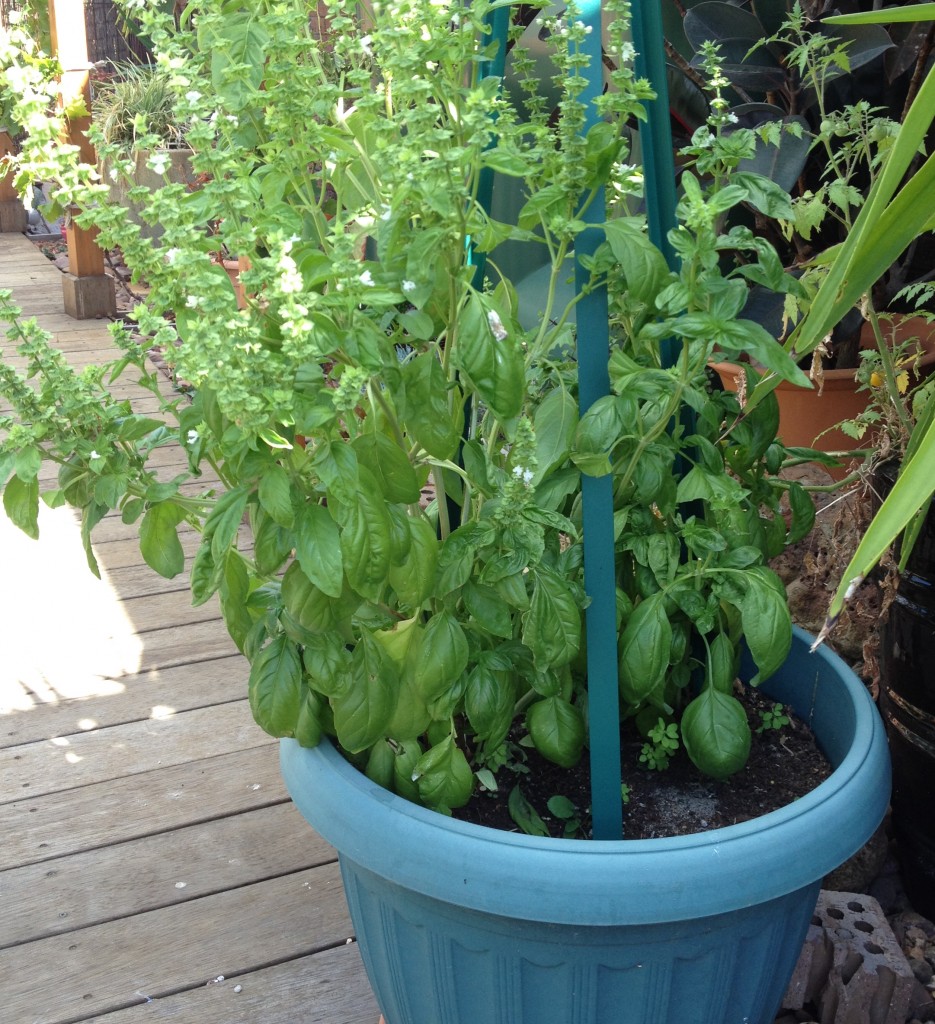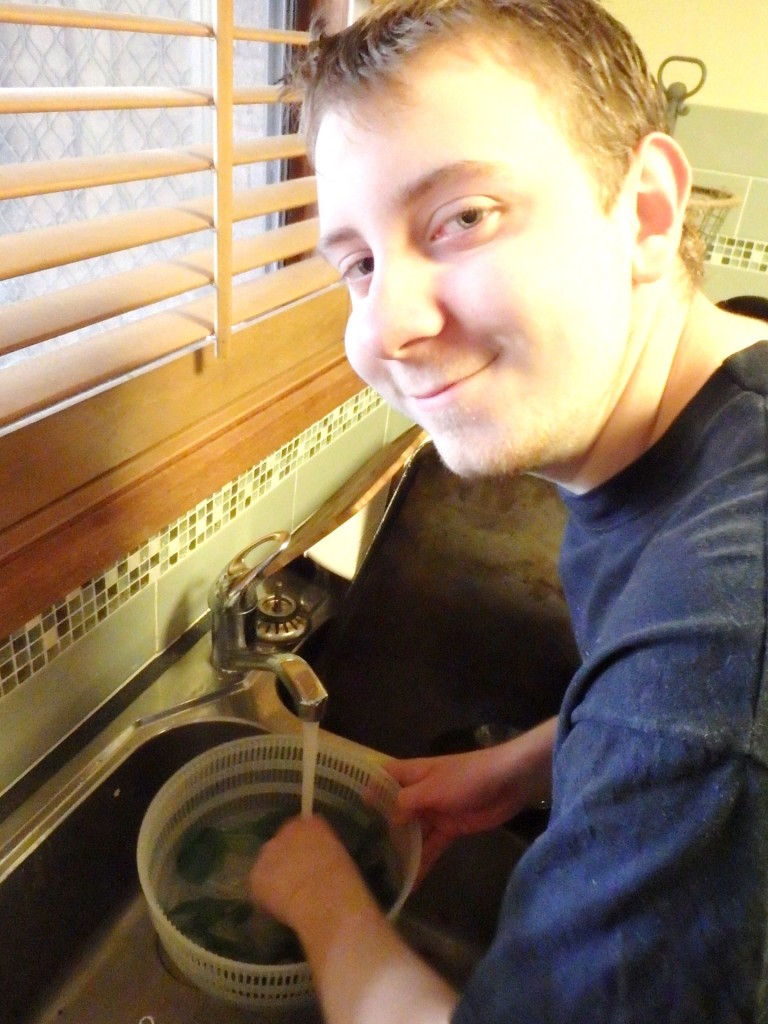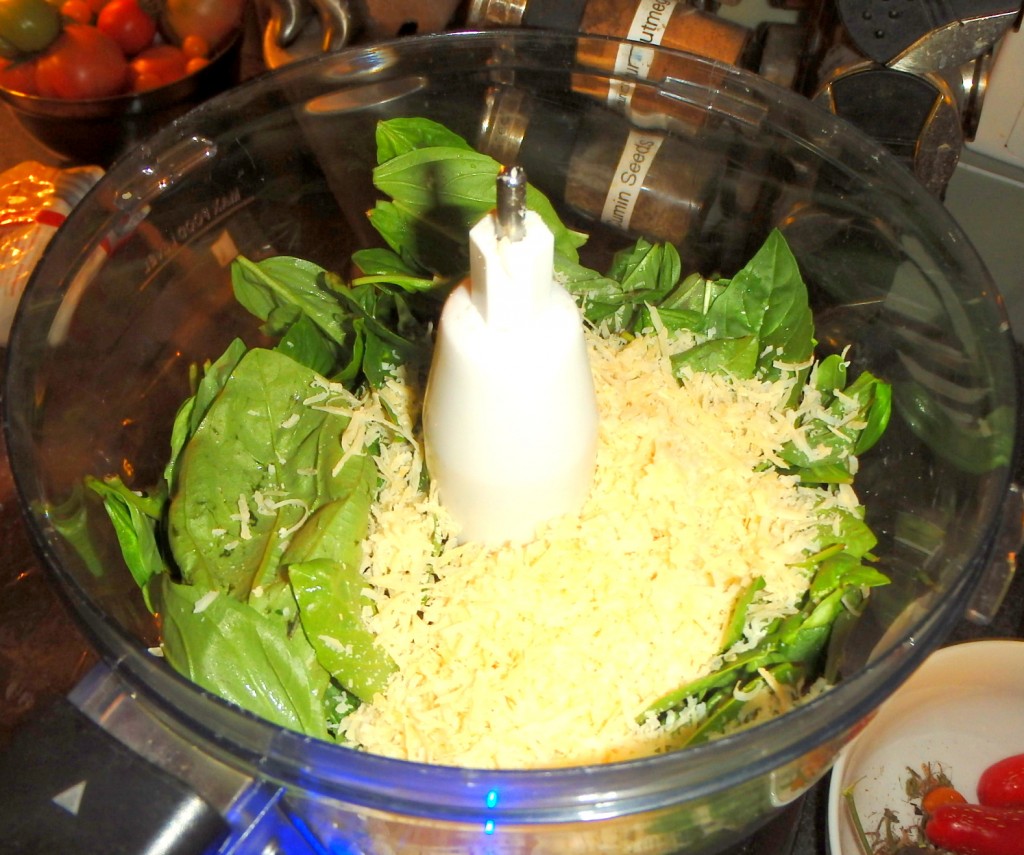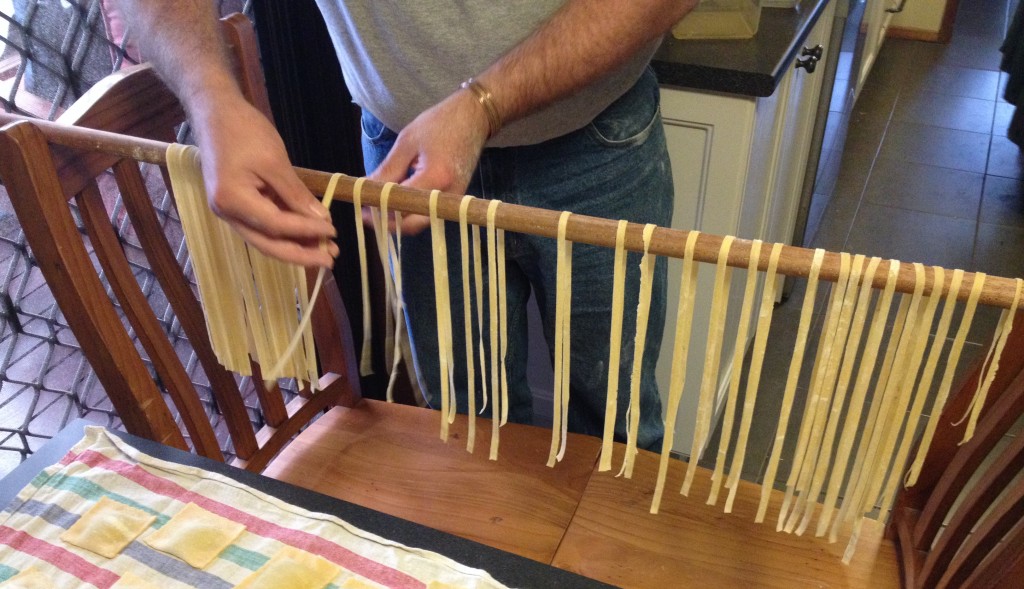We love fresh produce from our suburban food farm, especially this family favourite; Basil Pesto!
As one of our goals was to teach Ben (our teenage son) to cook meals, we thought it would be a good idea if Ben had a go at making it this time around.
As I am the main gardener around here, I planted this fine specimen in early spring last year. All I do is scatter last years seeds on the surface of the soil, and lightly spread a 2 mm layer of potting mix on top. Basil seeds take ages to germinate, so you just have to be a bit patient, but grow they will. I will be collecting these seeds again this year. Wait for them to dry out and pull off the stalk and store in a brown paper bag or sealed glass jar until spring.
Enough about growing, on with the basil pesto!
Even though we practice organic principles, nevertheless, we always wash our produce. You never know what bird might have dropped on it over the growing season. You can see here that Ben is rinsing off the leaves. As he is a newbie, I will let him off for not putting the plug in the sink to save water!
Once the leave are all clean and spun dry, Ben moved over to the food processor.
Once he managed to get all the leaves into the bowl with a chopping blade in place, he moved on to the cheese! About two years ago, I made some deliciously sharp Romano cheese which was perfect for this Basil pesto. I still had a little bit left that he could use.
He did a great job, and didn’t catch his knuckles. The aroma of the cheese was mouth-watering, to say the least. Into the food processor bowl it goes.
If you processed this now, it would be very dry, and not form a paste. To smooth things out you need two classic ingredients. Cashew nuts and Olive oil. About a cup of nuts and half a cup of olive oil.
Now I realise that cashews are grown in the tropics, and not very local, however I have read that you can substitute macadamia nuts if you are looking for that Aussie twist. The olive oil is from a local producer and tastes heavenly.
Ben then ground in some sea salt and black pepper for flavour and then pulsed the lot until it turned into a paste. He then tasted it, then put a bit on a cracker for me to taste. It was a bit dry so he added more olive oil, which did the trick. I normally add a couple of fat, home-grown garlic cloves, but Ben left these out for his recipe.
So Ben, what did it taste like?
A big thumbs up! Kim put it into containers, froze half and put some into the fridge until dinner time.
I cooked up some fettuccine and Ben stirred in his special Basil pesto. He told me that it was delicious.
So there you go. If my fourteen year old son can make it, you certainly can! All you have to do is grow some basil.
Do you have any variations on Ben’s recipe? He would love to learn more so he can give it a try next time. There are still plenty of leaves on the basil bushes.











Excellent work, Ben! And wow, dinner at your place looks a bit special.
My variation (not very original) is to use other sorts of greens when there’s no basil around. I made coriander pesto in spring during our garden’s more-coriander-than-you-can-eat period, and I’ve made nasturtium leaf pesto before. I don’t usually use cheese, but do add loads of nuts. (Pine-nuts are my deluxe nut of choice, but they’re expensive, so we go with whatever’s around and nutty.)
Nasturtium leaf pesto- yummo! I can totally imagine it. Now, must go plant some nasturtiums!
Maybe wait until Spring (depending where you live). They die back in winter if you get a frost. (Happy future pestoing!)
Try a bit of pecerino cheese (creamier than Romano or Parm) and a few drops of sesame oil … roasting the garlic also takes away that raw taste too.
My favourite is Corriander and Macadamia with garlic and Parmesan. Sometimes I add a small amount of Chilli too.
I think it’s great that you are teaching him to cook and make things that may look so easy to us and/or he’s seen you make but nothing beats the practical learning side of things and one day his “wife to be” will be thanking you as parents for teaching him how to cook in the kitchen. I teach my 10 year old and 8 year old how to do things in the Thermomix however it’s a little bit more supervised than your son but starting early is the name of the game. Great job Gavin. Regards Kathy A, Brisbane, Australia
….. and my invitation to dinner was where? Good job Ben. Im going to show this to my 17yr old. He would love the cooking part, just not the eating part. More for me….
All sorts of leafy greens can be used to make pesto. A couple of days ago I made a big batch with equal amounts of rocket and sorrel leaves with pecorino romano (a sheeps milk cheese I’d bought), garlic, olive oil and lemon zest and juice. I froze most of it in ice cube trays. The little bit left over was delicious with feta on crackers.
Save a little of the pasta cooking water to add, bit by bit, should the pasta become “gluggy” after the pesto is mixed through it.
I don’t used nuts because they can be too rough for my innards (I have Crohn’s disease). My dear Dad has made pesto from flat leaf and curly leaf parsley. Or use any strongly flavoured herb, like pizza thyme, with fresh spinach, chard or kale. Pesto makes a pleasant alternative to a tomato based sauce on home made pizzas, gnocchi and potatoes too.
Happy cooking and eating Ben!
Michelle, across the ditch in Wellington
Love some pesto! We make big lots to freeze as well.
Pinenuts are the traditional nut in pesto. I’ll give cashews a try, they are way cheaper.